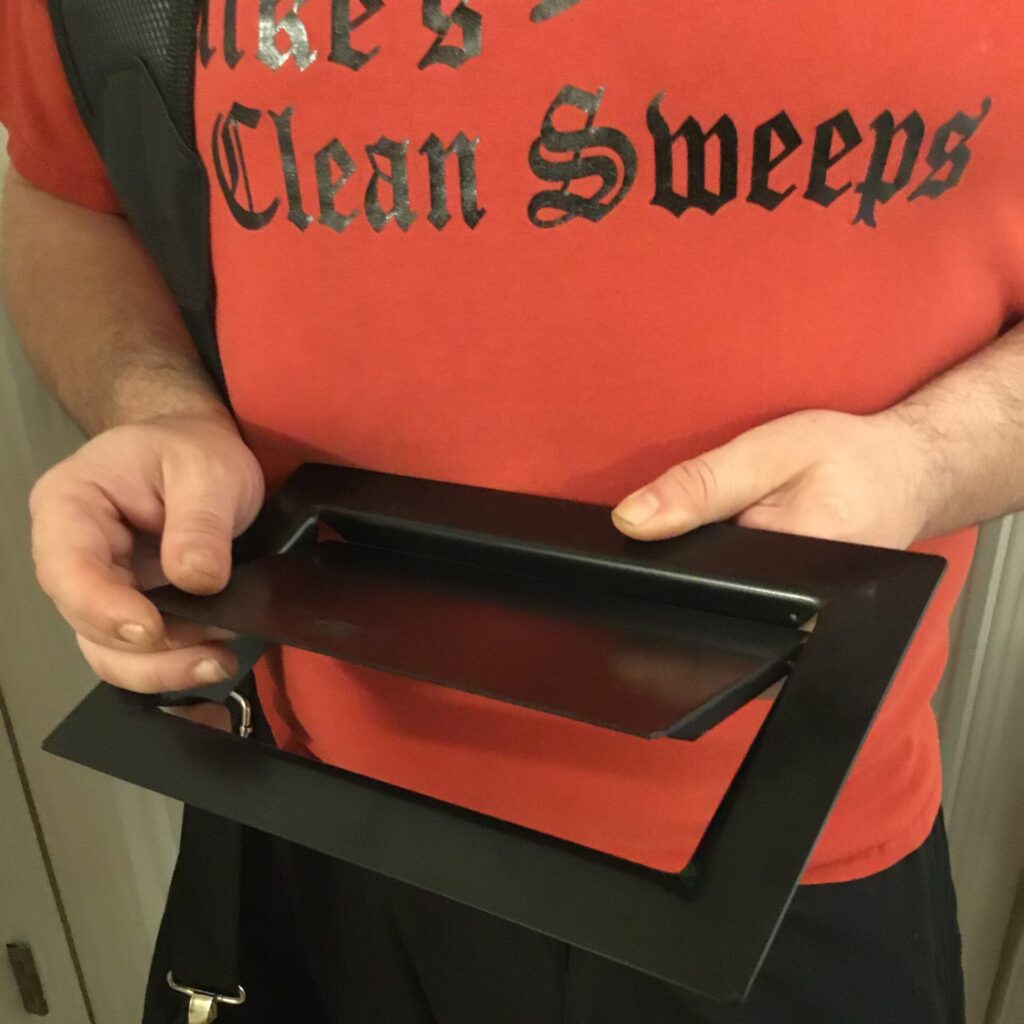
Level One Inspections
Our Level 1 Chimney Inspections include the removal of creosote, a flue scan of the concealed interior with a specialized camera system, and a three page report with six images. A Level 1 Inspection is typically sufficient in determining whether a fireplace is fit for use. Because we always run a camera (and some folks never do), we often find that the previous company has inadequately cleaned the flue, presumably due to a lack of requisite equipment.
Learn More
Level Two Inspections
Level 2 Chimney Inspections are required by NFPA 211 with each transfer of property, following a sudden occurrence event like a chimney fire, earthquake, or lightning strike, and prior to relining or changing the type of hearth appliance being vented (like prior to installing a direct vent gas insert in a masonry fireplace that previously burned wood). A Level 2 will include the additional inspection of the basement/crawlspace and attic (if accessible) as well as a 12 page report citing code and over 50 images. The National Fire Protection Association’s requirement to perform a Level 2 with each real estate transaction is an important bulwark safeguarding the public from the myth that a quick cleaning is sufficient to safely build a fire in one’s home.
Learn More


Caps and Dampers
A termination cap/spark arrestor not only prevents sparks and embers from settling on your roof, it also serves to keep rainwater out, which will rust out metal components and accelerate the deterioration of flue tiles. The damper is the door to flue, the inner passageway that leads to the top of the chimney. Both termination caps and functional dampers are essential, even if you do not plan on using your fireplace. While caps keep out the elements, preserving the integrity of a fireplace that adds value to the home, dampers prevent heated air from rising up and out the chimney when the fireplace is not in use.
Learn More
Relining
Although there are various options for replacing the lining tiles for masonry chimneys, one tried and true method involves breaking out the terracotta and inserting a stainless steel, spiral-welded liner insulated with TherMix chimney insulation. Our liners are covered by a transferable lifetime warranty! (See our step by step photographic documentation of the relining process over in the Relining Gallery).


Weather Proofing
All new and existing masonry structures are susceptible to water damage and, even if repaired, will continue to deteriorate if not protected. That’s why we apply ChimneySaver Water Repellent. Unlike traditional sealants ChimneySaver penetrates deep enough to protect masonry from destructive water penetration while maintaining the structures vapor permeability.
Chimney Crown Repair
Chimneys are highly exposed to the elements. The crown at the top of your chimney is designed to prevent rainwater from damaging your lining tiles and the brickwork that surrounds them. Years of water intrusion and neglect can lead to extensive chimney repairs. We offer a maintenance-free solution.
Learn More


Ash Dump Door
Although more a convenience item than a safety concern, the ash dump is a trap door that should be mortared firmly into place and allow the ashes to be swept by the homeowner into the ash dump cavity rather than bucketed through the house. However, ash dump doors frequently rust out, sometimes leaving a large void under the grate that supports the burning logs. It is a good idea to seal up the exposed hole in order to prevent burning coals from falling into the ash dump cavity. We install black galvanized ash dumps both to make burning wood more convenient as well as to keep fire in it’s place.
Don’t Forget Your Dryer Vent!
Everyone uses a clothes dyer but many ignore the maintenance they know is required. Just a half inch of lint accumulation in a 4″ round vent will reduce the efficiency of exhaust by 44%! Annual maintenance is even more crucial for homes with longer dryer vents. While the maximum allowable run for a dryer vent is 25 feet, many are in excess of this length, and, with each 90 degree elbow adding an equivalent of 5 feet to the run, the overall ‘developed’ length is often longer still, extending drying time, collecting more lint, and forcing the machine to work harder pushing the heated exhaust gases through the vent.
